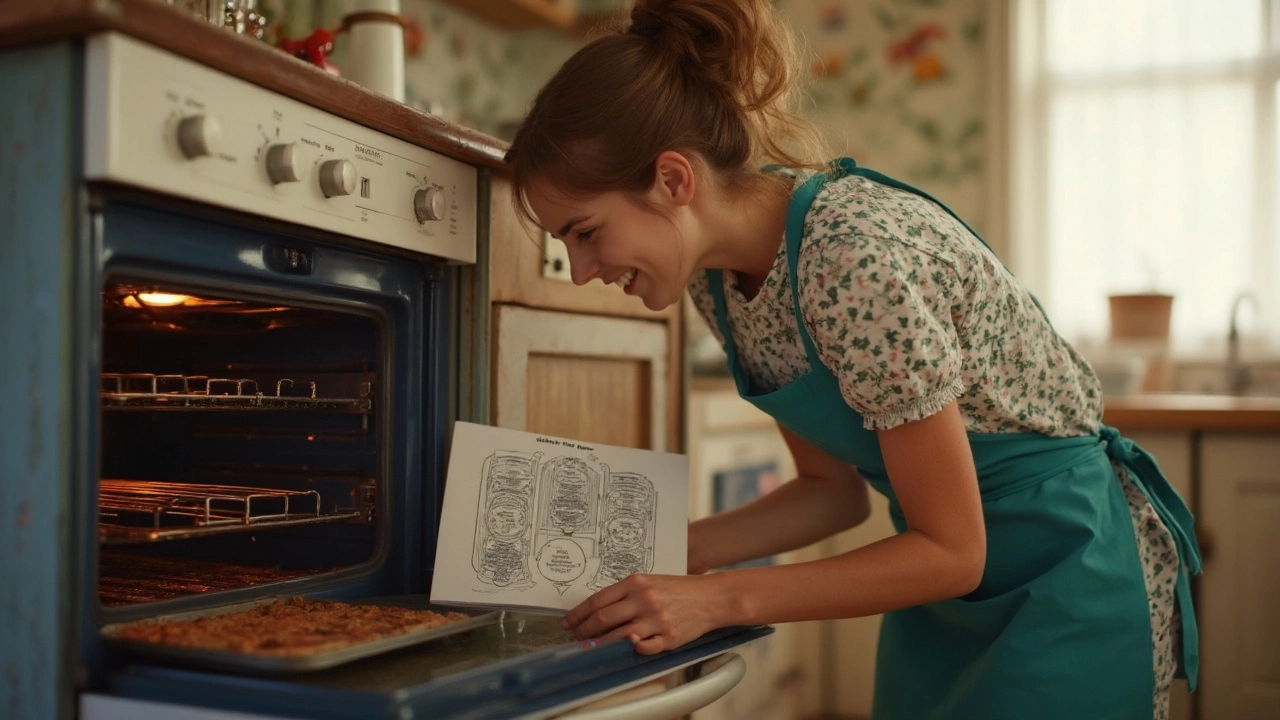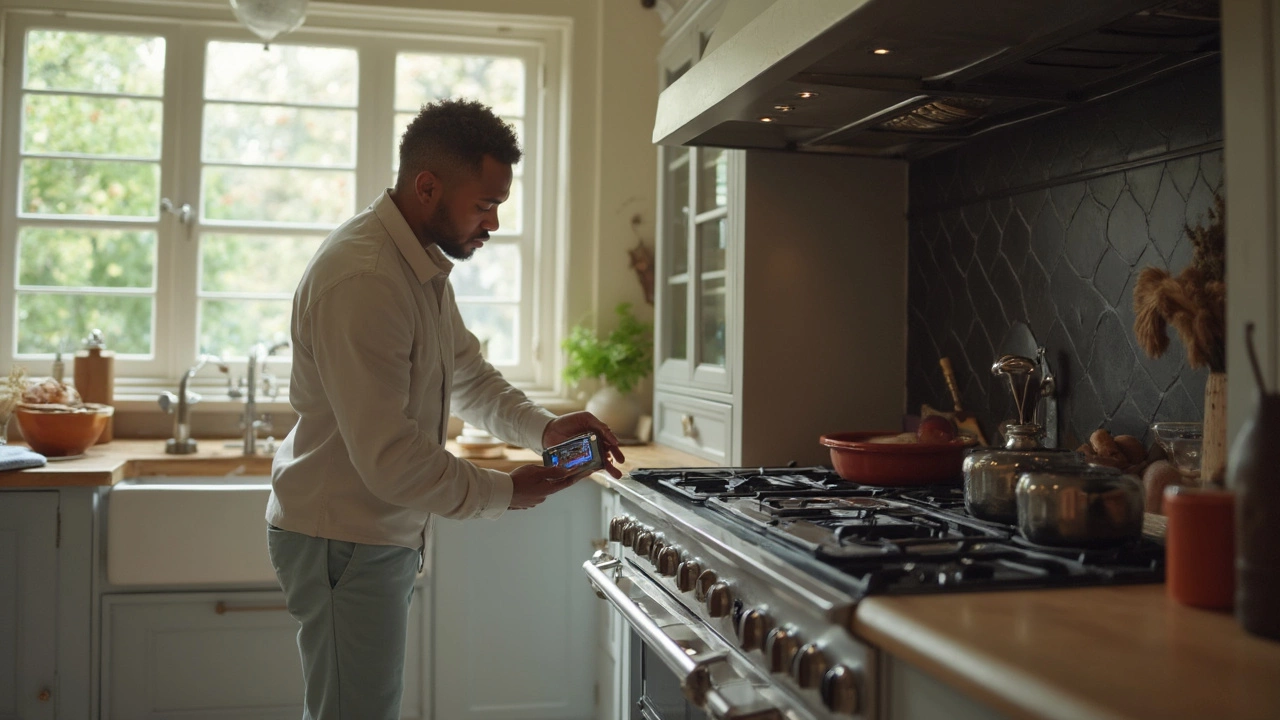Ever tried to bake your favorite cake and opened the oven to find it barely cooked or burnt to a crisp? Yep, we've all been there. Diagnosing an oven problem is like playing detective, and sometimes it feels like the clues are hiding. But worry not, we've got you covered with some straightforward tips to help you figure out what's going wrong.
First off, let's get to know some common issues. If your oven isn't heating evenly, it could be the heating element. When half your cake is raw and the other half is charred, it might be time to take a deeper look at those coils. Another culprit might be the thermostat; if your oven temperature seems off, a calibration problem could be at play.
Don't rush to call a repair technician just yet. There are a few basic checks you can do. Always start by verifying that the oven is plugged in and receiving power. Sounds silly, but it happens! Also, check if the door seals are intact, as heat loss here can mess with the cooking.
- Understanding Common Oven Issues
- Basic Troubleshooting Steps
- When to Call a Professional
- Safety Precautions During Repairs
Understanding Common Oven Issues
When your electric oven misbehaves, it can totally hijack your dinner plans. The problem might seem complicated, but many issues are surprisingly common. Let's demystify these problems for you.
Heating Elements Malfunction
If your oven isn't heating up properly, it's often due to the heating elements. The bake and broil elements are the key players in ensuring your food gets cooked evenly. When either isn't working, you might spot visible damages like blisters or breaks on the element itself. Also, keep an eye out for uneven heating – if pies are perfect in one part and raw in another, an element might be acting up.
Temperature Inaccuracy
Ever baked cookies at 350°F only to find them burnt? Your oven's thermostat could be lying to you. An incorrectly calibrated thermostat sends wrong temperature readings, leading to uneven or inaccurate baking. You can test this using an oven thermometer set on the middle rack. Compare it with your set temperature and see if they're in sync.
Door Seal Problems
The rubbery lining around your oven door may seem trivial, but it keeps the heat where it should be. If you notice your oven isn't staying hot, it might be due to worn-out door seals. These seals ensure that heat stays inside – crucial for efficient cooking.
Control Panel or Timer Malfunction
The control panel can be another sneaky suspect. If your oven display is glitching or buttons are unresponsive, it might be time for some maintenance or a reset. Always refer back to your manual for troubleshooting steps specific to your model.
Unusual Noises
If your oven starts making strange noises, it could indicate a worn-out fan or loose screws. Familiarize yourself with normal operational sounds so you can spot odd ones quickly. If it sounds like a jet engine in there, give it a check.
Pro Tip: Regular maintenance like cleaning grease and food debris can help avoid many of these common problems. An occasional vacuum around the back vents can do wonders too.
Basic Troubleshooting Steps
Alright, so let's get your oven back on track with some simple troubleshooting steps. No need to overthink things. Often, the issue is simpler than it appears and can be fixed without much hassle.
1. Check the Power Source
Begin by ensuring your oven is properly plugged into the wall outlet. If your oven isn't turning on, there's a chance the power cord is loose or the outlet might be faulty. Try moving the plug to a different outlet to see if it helps.
2. Inspect the Temperature Setting
Sometimes, we overlook the basics. Double-check the temperature setting. Ensure that the thermostat is set correctly, and if your oven has a digital display, make sure it's reading the right temperature.
3. Examine the Heating Element
If things aren't heating up as expected, the heating element might be the culprit. Take a look at the element when the oven is on; it should glow red-hot. If only part of it is lighting up, that's a sign the element needs replacing.
4. Inspect the Oven Door Seal
Oven doors not closing properly can cause a lot of issues. Make sure the rubber gasket that seals the door is intact. If it's damaged or loose, heat will escape, causing uneven cooking.
5. Clean the Oven Interior
A little grime can go a long way in sabotaging your cooking. Residue from spills can affect your oven’s performance. A clean-up using baking soda and vinegar can do wonders.
6. Test the Circuit Breaker
If your oven still isn’t working after these steps, check the circuit breaker. It's possible it tripped and needs resetting. Give it a check and flip it back on if necessary.
Keep in mind, these steps are a starting point for diagnosing oven issues. If the problem persists and you're stumped, it might be time to consider reaching out to a professional.

When to Call a Professional
Sometimes, even the savviest DIY enthusiast needs to hang up the apron and seek a professional's help. Here's when you should consider dialing up an expert for your oven repair.
Smell Gas? Act Fast!
If your electric oven has a funny smell reminiscent of gas, stop what you’re doing and call a professional immediately. This could indicate a gas leak, which is a serious safety hazard. It’s always better to be safe than sorry.
Breaker Trips
Does your oven trip the circuit breaker whenever you flick it on? This might hint at an electrical issue. Messing with electrical components without proper expertise can be dangerous. A professional can diagnose if it’s a wiring problem or something more serious internally.
Strange Noises
Weird noises coming from your oven can be disorienting. While a little hum is normal, clanking or grinding noises are red flags. These could mean mechanical parts are wearing out or coming loose, requiring professional attention.
- Heating element replacements can be tricky
- If you've tried all the basic troubleshooting steps with no luck
- Your oven's warranty might require professional service
Cost of Common Repairs
| Issue | Estimated Cost |
|---|---|
| Thermostat replacement | $100 - $250 |
| Heating element repair | $150 - $300 |
| Electronic control board | $200 - $400 |
Whenever you're in doubt, remember a professional can not only fix the problem but also save your oven from further damage. They have the skills, tools, and experience to ensure the job's done safely and correctly. Sometimes, calling in the experts is simply worth the peace of mind.
Safety Precautions During Repairs
Before you pull out the toolbox and start poking around your electric oven, let's talk safety. These tips aren't just good advice—they're essential for keeping you and your home safe while you troubleshoot those pesky oven problems.
Power Off First
The golden rule of appliance repair: turn it off. And I don't mean just the oven controls—unplug it entirely. If you can't reach the plug, switch off the circuit breaker. Remember, no electricity, no surprises!
Use the Right Tools
Using proper tools for oven repair makes the job easier and prevents accidents. A reliable multimeter, screwdriver set, and a pair of insulated gloves should have you covered for most basic issues.
Beware of Sharp Edges
A little-known fact is that ovens have more sharp edges than a porcupine. Handle grill trays, panels, and heating elements carefully.
According to the U.S. Consumer Product Safety Commission, "Over 30,000 injuries related to large appliances are reported annually. Most are avoidable with basic safety measures."
Wear Protective Gear
Gloves and goggles might seem overkill, but trust me on this. Between sharp metal, electrical components, and chips that fly off when loosening screws, protecting your hands and eyes is a smart move.
Know When to Call the Pros
Identifying when you're out of your depth is crucial. If you smell gas or hear unusual noises, it's best to step back and call a qualified technician.
| Year | Reported Appliance Injuries |
|---|---|
| 2022 | 32,000 |
| 2023 | 30,500 |
| 2024 | 29,000 |
These precautions aren't just tips—they're your safety net. Stay cautious, take your time, and if something feels off, err on the side of caution. It's better to play it safe and wait it out than rush into unnecessary risk.

I am an expert in the services industry with a focus on appliance repair. My passion lies in understanding how things work and educating others in simple, engaging ways. This enthusiasm fuels my writing, where I delve into topics around appliance maintenance and troubleshooting. I aim to make these subjects clear and accessible to all readers.